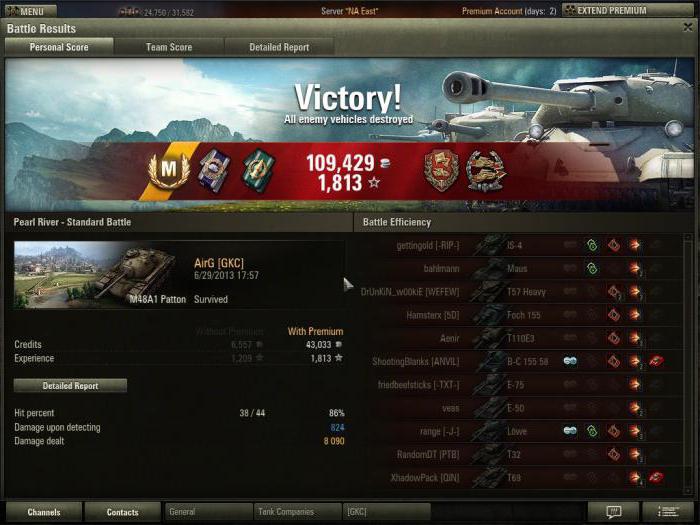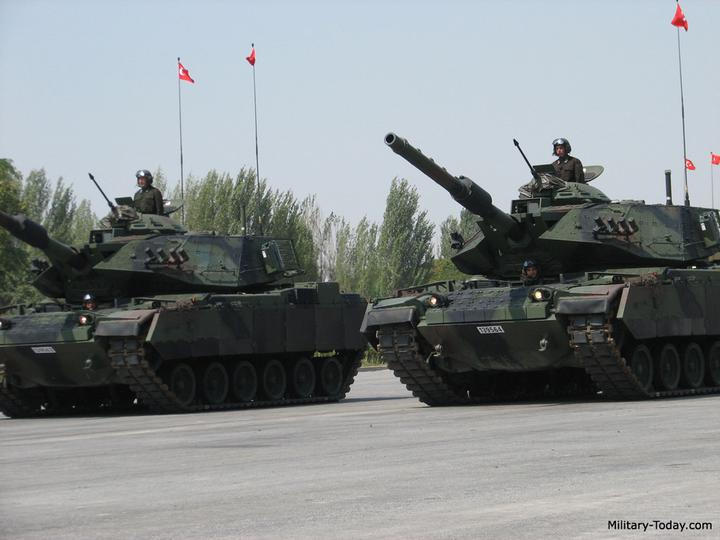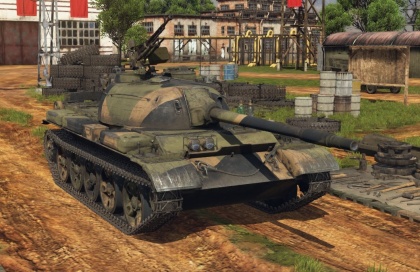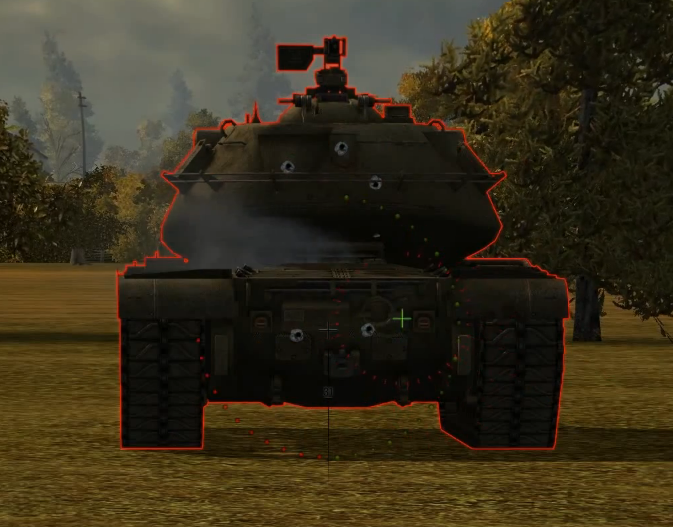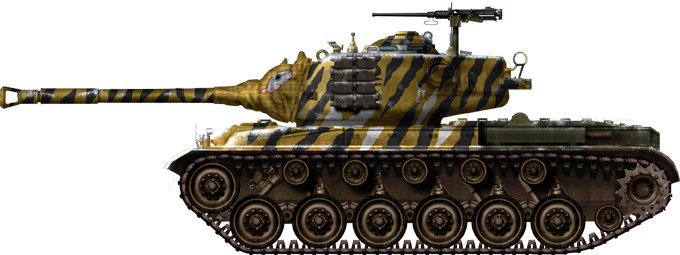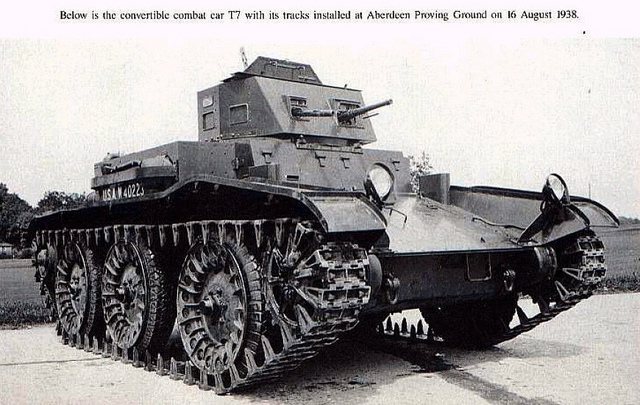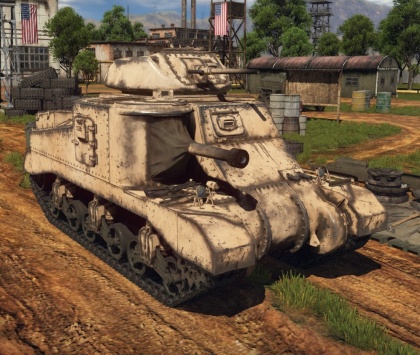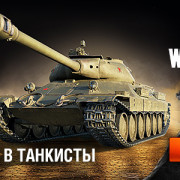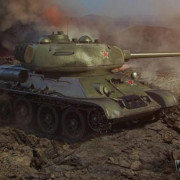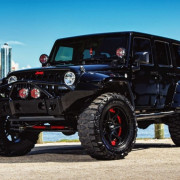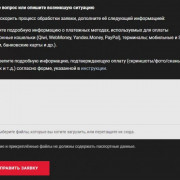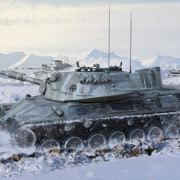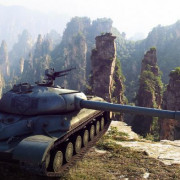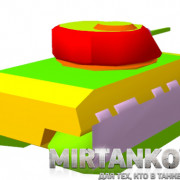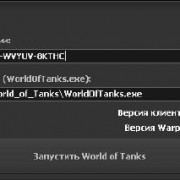M48 patton
Содержание:
Armaments
Main armament
Main article: M41 (90 mm)
| 90 mm M41 | |||||
|---|---|---|---|---|---|
| Capacity | Verticalguidance | Horizontalguidance | Stabilizer | ||
| 46 | -9°/+19° | ±180° | N/A | ||
| Turret rotation speed (°/s) | |||||
| Mode | Stock | Upgraded | Prior +Full crew | Prior +Expert qualif. | Prior +Ace qualif. |
| Arcade | 22.8 | ??.?? | ??.?? | ??.?? | ??.?? |
| Realistic | 14.3 | ??.?? | ??.?? | ??.?? | 24.00 |
| Reloading rate (seconds) | |||||
| Stock | Prior +Full crew | Prior +Expert qualif. | Prior +Ace qualif. | ||
| 9.7 | ??.?? | ??.?? | 7.5 |
Ammunition
| Penetration statistics | |||||||
|---|---|---|---|---|---|---|---|
| Ammunition | Type ofwarhead | Penetration @ 90° (mm) | |||||
| 10 m | 100 m | 500 m | 1,000 m | 1,500 m | 2,000 m | ||
| DM502 | HESH | 102 | 102 | 102 | 102 | 102 | 102 |
| M332 shot | APCR | 321 | 316 | 292 | 265 | 240 | 218 |
| M431 shell | HEATFS | 320 | 320 | 320 | 320 | 320 | 320 |
| M71 shell | HE | 13 | 13 | 13 | 13 | 13 | 13 |
| M82 shot | APCBC | 185 | 182 | 170 | 155 | 142 | 130 |
| Shell details | ||||||||||
|---|---|---|---|---|---|---|---|---|---|---|
| Ammunition | Type ofwarhead | Velocity(m/s) | ProjectileMass (kg) | Fuse delay(m) | Fuse sensitivity(mm) | Explosive Mass(TNT equivalent) (g) | Normalisation at 30°from horizontal | Ricochet | ||
| 0% | 50% | 100% | ||||||||
| DM502 | HESH | 853 | 10.6 | 0.4 | 0.1 | 3052.8 | +0.0° | 73° | 77° | 80° |
| M332 shot | APCR | 1,249 | 5.7 | N/A | N/A | N/A | +1.5° | 66° | 70° | 72° |
| M431 shell | HEATFS | 1,216 | 5.8 | N/A | 0.1 | 712.6 | +0.0° | 65° | 72° | 75° |
| M71 shell | HE | 823 | 10.55 | 0.1 | 0.5 | 925 | +0.0° | 79° | 80° | 81° |
| M82 shot | APCBC | 853 | 10.94 | 1.2 | 14.0 | 137.2 | +4.0° | 48° | 63° | 71° |
| Smoke shell characteristics | ||||||
|---|---|---|---|---|---|---|
| Ammunition | Velocity(m/s) | ProjectileMass (kg) | Screen radius(m) | Screen deploy time(s) | Screen hold time(s) | Explosive Mass(TNT equivalent) (g) |
| M313 | 821 | 10.7 | 13 | 5 | 20 | 50 |
Ammo racks
| Fullammo | 1strack empty | 2ndrack empty | 3rdrack empty | 4thrack empty | Visualdiscrepancy |
|---|---|---|---|---|---|
| 46 | 42 (+4) | 28 (+18) | 16 (+30) | 1 (+45) | No |
Machine guns
Main articles: M85 (12.7 mm), M73 (7.62 mm)
| 12.7 mm M85 | |||
|---|---|---|---|
| Commander cupola mount | |||
| Capacity(Belt capacity) | Fire rate(shots/minute) | Verticalguidance | Horizontalguidance |
| 900 (200) | 625 | -10°/+60° | ±180° |
| 7.62 mm M73 | |||
|---|---|---|---|
| Coaxial mount | |||
| Capacity(Belt capacity) | Fire rate(shots/minute) | Verticalguidance | Horizontalguidance |
| 5,950 (250) | 500 | N/A | N/A |
Variants
Jordanians M 48 tank
With the M47 being only a stopgap solution the M48 Patton was a completely new design compared to its predecessors. The hull and turret were of cast steel, well-curved design, and offered much better ballistic protection than former welded and rather flat designs. The M48 was significantly larger than any earlier medium tank design. The M48 finally omitted the bow machine gun and gunner. It was armed with a co-axial 7.62mm MG and the commander’s .50 cal MG only. The M48 retained a 90mm M41 gun as the main weapon. The US Army evaluated the first prototypes in 1951 and the production of the M48 began in 1952. Production finally ceased in 1959 with 11703 vehicles being build.
M48/ M48A1
The first production M48 can easily be distinguished by the .50cal being mounted on an external cradle without any armor protection. The tank was fitted with an AV1790 gasoline engine giving it an operational range of only 115km. Many of the early M48 suffered from the lack of testing and were not considered fit for service. They were quickly superseded by the M48A1. The M48A1 received the M1 commanders’ cupola providing armored cover and enclosing the .50 cal plus numerous other improvements to the tank. However, the M48/ M48A1 was still hampered by its unreliability and lack of range as it was pressed into service due to cold war threats. To overcome the lack of range a system of jettison-able fuel drums was developed.
M48A2
The M48A1 was quickly followed by the M48A2 entering service in 1955 with a new power plant and fire control systems. The M48A2 can be easily distinguished from the earlier versions. It had three instead of five return rollers and a new engine deck without the extensive grille work atop. However, it was still powered by gasoline. The next step, the M48A2C was a further improved version; externally the only major difference is the absence of the small track tensioning wheel between the sixth road wheel and the sprocket. All M48A2 had a new headlight arrangement, similar to the M60. The M48A2C was the last ‘all-new’ M48 to be produced, all further versions are rebuilds of existing tanks.
M48A3
In front of the loader’s position, to the left of the main gun, is a nineteen-round ammo rack. This tank is fitted out with replica HEAT and sabot ammunition
M48A5
The final US version is the M48A5 of 1975. It incorporates a new main gun, the L107 105mm, two M60D 7.62mm machine guns, and new tracks with replaceable octagonal track shoes, the T142 track, and a new CWS now close to the IDF ’Urdan’ design as most prominent features. Of course, the fire control received upgrades also, most M48A5 also have the lighting system reworked to M60 standard. The rear lights and engine access doors were upgraded, too. The whole M48A5 program nevertheless shows a wide range of actual different conversion status’, some even without the new gun but others with the old M1 cupola or track. Conversion packs were also sold to other M48 users.
The M48A5 has been phased out of any US service since the mid-1990s.
Foreign service
General info
Survivability and armour
Describe armour protection. Note the most well protected and key weak areas. Appreciate the layout of modules as well as the number and location of crew members. Is the level of armour protection sufficient, is the placement of modules helpful for survival in combat?
If necessary use a visual template to indicate the most secure and weak zones of the armour.
Mobility
| Game Mode | Max Speed (km/h) | Weight (tons) | Engine power (horsepower) | Power-to-weight ratio (hp/ton) | |||
|---|---|---|---|---|---|---|---|
| Forward | Reverse | Stock | Upgraded | Stock | Upgraded | ||
| Arcade | 56 | 13 | 47.8 | 1279 | 1,574 | 26.76 | 32.93 |
| Realistic | 50 | 12 | 730 | 825 | 15.27 | 17.26 |
Development history
OTCM #33791 directive designated the 90mm Gun Tank T48 as to be the next step in tank design and development on February 27, 1951. As on the drawing board, the design was in every bit revolutionary and nearly all but a few parts, namely the main gun, rangefinder, roadwheels, return rollers and drive sprockets, were redesigned. The most externally striking aspects were the new hull, longer, lower, with a sloped front part, and the hemispherical turret, reminder of the Soviet T-54/ design.
Internally, the crew was reverted to four after the abandon of the hull machine-gunner. After the usual 1/8 and 1/4 models kits, and the test prototype T48, on 2 April 1953, the Ordnance Technical Committee Minutes (OTCM) approved the new model for standardization and production as the 90mm Gun Tank M48. Production will last from 1952 to 1959 with over 12,000 units.
The development took some gradual improvements over time. After the unsuccessful M48C quickly relegated to training, the M48A1 and A2 had some engine troubles which were eventually corrected on the M48A3 diesel conversions. Long after the production was over, the M48A5 final upgrade saw the adoption of the more modern M68 105 mm main gun along with new FCS and other improvements to the M60 standard.
M48A2 cutaway – Credits: Wikimedia commons.
Передвижение
А теперь мы подходим ко второму недостатку танка «М48 Паттон». Двигатель в совокупности с шасси обеспечивает слишком низкую максимальную скорость, чтобы использовать данный СТ в качестве разведчика.
При максимальной скорости в 45 км/ч на ровной дороге и 20 км/ч на грунте вы быстро отстанете от атакующей группы и, скорее всего, просто погибнете в одиночестве под волной нападения противника.
Таким образом, выбирайте себе наиболее опасные направления там, куда не придется долго ехать. Вы сможете оказать должную поддержку только в том случае, если успеете вовремя добраться до места перестрелки.
Variants
Jordanians M 48 tank
With the M47 being only a stopgap solution the M48 Patton was a completely new design compared to its predecessors. The hull and turret were of cast steel, well curved design and offered much better ballistic protection than former welded and rather flat designs. The M48 was significantly larger than any earlier medium tank design. The M48 finally omitted the bow machine gun and gunner. It was armed with a co-axial 7.62mm MG and the commander’s .50 cal MG only. The M48 retained a 90mm M41 gun as main weapon. The US Army evaluated the first prototypes in 1951 and production of the M48 began in 1952. Production finally ceased in 1959 with 11703 vehicles being build.
M48/ M48A1
The first production M48 can easily be distinguished by the .50cal being mounted on an external cradle without any armour protection. The tank was fitted with an AV1790 gasoline engine giving it an operational range of only 115km. Many of the early M48 suffered from the lack of testing and were not considered fit for service. They were quickly superseded by the M48A1. The M48A1 received the M1 commanders’ cupola providing armoured cover and enclosing the .50 cal plus numerous other improvements to the tank. However the M48/ M48A1 was still hampered by its unreliability and lack of range as it was pressed into service due to cold war threats. To overcome the lack of range a system of jettison-able fuel drums was developed.
M48A2
The M48A1 was quickly followed by the M48A2 entering service in 1955 with a new power plant and fire control systems. The M48A2 can be easily distinguished from the earlier versions. It had three instead of five return rollers and a new engine deck without the extensive grille work atop. However it was still powered on gasoline. The next step, the M48A2C was a further improved version; externally the only major difference is the absence of the small track tensioning wheel between the sixth road wheel and the sprocket. All M48A2 had a new headlight arrangement, similar to the M60. The M48A2C was the last ‘all new’ M48 to be produced, all further versions are rebuilds of existing tanks.
M48A3
In front of the loader’s position, to the left of the main gun, is a nineteen-round ammo rack. This tank is fitted out with replica HEAT and sabot ammunition
M48A5
The final US version is the M48A5 of 1975. It incorporates a new main gun, the L107 105mm, two M60D 7.62mm machine guns and new tracks with replaceable octagonal track shoes, the T142 track and a new CWS now close to the IDF ’Urdan’ design as most prominent features. Of course the fire control received upgrades also, most M48A5 also have the lighting system reworked to M60 standard. The rearlights and engine access doors were upgraded, too. The whole M48A5 program nevertheless shows a wide range of actual different conversion status’, some even without the new gun but others with the old M1 cupola or track. Conversion packs were also sold to other M48 users.
The M48A5 has been phased out of any US service by the mid 1990’s.
Foreign service
Башня
Тут выбирать не приходится. К сожалению, данное устройство является слабым местом «М48 Паттон»
Из-за выступающей командирской башенки повышен риск контузии этого важного члена экипажа. Да и размер основной башни оставляет желать лучшего — по традиции американские танки остаются самой легкой мишенью
Зато повышается обзор (420 метров). Как и говорилось, заняв достаточно удобную позицию сверху, вы сможете светить поле боя лучше других аналогичных машин. Учитывая дальность работы радиостанции в 745 метров, заняв позицию в центре карты, вы сможете не только светить врагов в большом радиусе, но и получать удовольствие от игры.
Забавные цифры выдает бронирование. Кормовая защита у башни выше, чем у корпуса, и составляет 50 единиц. Она позволяет с хорошим шансом защититься от ваншота с фугаса, но запросто пробивается даже легкими танками.
Бортовая броня такая же, как и у корпуса, и составляет 76 мм. При этом лобовая защитная пластина толще корпуса на 25 мм при показателе в 177 мм.
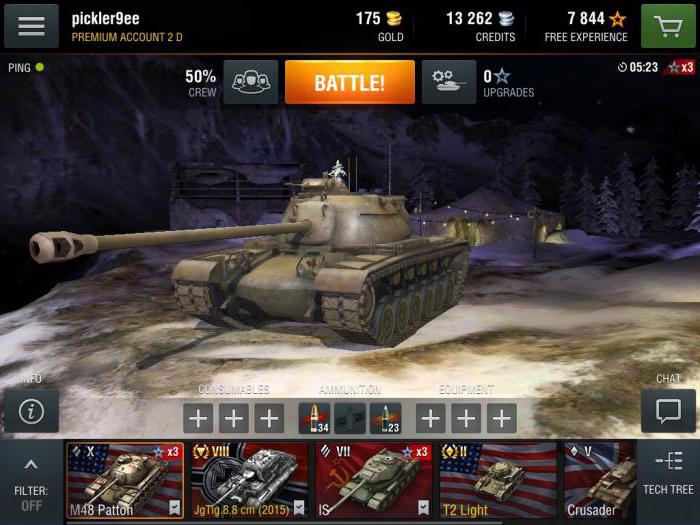
Armaments
Main armament
Main article: L7A3 (105 mm)
The M48G2 G A2 wields the widely used 105 mm L7A3 cannon, which provides fast, accurate fire.
| 105 mm L7A3 | |||||
|---|---|---|---|---|---|
| Capacity | Vertical guidance | Horizontal guidance | Stabilizer | ||
| 46 | -9°/+19° | ±180° | N/A | ||
| Turret rotation speed (°/s) | |||||
| Mode | Stock | Upgraded | Prior + Full crew | Prior + Expert qualif. | Prior + Ace qualif. |
| Arcade | 22.85 | 38.2 | 38.4 | 42.5 | 45.18 |
| Realistic | 14.28 | 20.2 | 20.4 | 22.6 | 24.0 |
| Reloading rate (seconds) | |||||
| Stock | Prior + Full crew | Prior + Expert qualif. | Prior + Ace qualif. | ||
| 8.7 | 7.7 | 7.1 | 6.7 |
Ammunition
This tank has access to a stock APDS shell (DM13), HEAT-FS shell (DM12) as a tier 2 modification, HESH shell (DM502) as a tier 1 modification and a APFSDS shell as a Tier 4 modification (DM23).
| Penetration statistics | |||||||
|---|---|---|---|---|---|---|---|
| Ammunition | Type of warhead | Penetration in mm @ 0° Angle of Attack | |||||
| 10m | 100m | 500m | 1000m | 1500m | 2000m | ||
| DM13 | APDS | 303 | 302 | 296 | 277 | 257 | 252 |
| DM502 | HESH | 127 | 127 | 127 | 127 | 127 | 127 |
| DM12 | HEATFS | 400 | 400 | 400 | 400 | 400 | 400 |
| DM23 | APFSDS | 337 | 335 | 330 | 322 | 314 | 306 |
| Shell details | ||||||||||
|---|---|---|---|---|---|---|---|---|---|---|
| Ammunition | Type of warhead | Velocity in m/s | ProjectileMass in kg | Fuse delay
in m: |
Fuse sensitivity
in mm: |
Explosive Mass in g (TNT equivalent): | Normalization At 30° from horizontal: | Ricochet: | ||
| 0% | 50% | 100% | ||||||||
| DM13 | APDS | 1,478 | 4 | N/A | N/A | N/A | +1.5° | 75° | 78° | 80° |
| DM502 | HESH | 732 | 14.85 | 0.4 | 0.1 | 2,990 | +0° | 73° | 77° | 80° |
| DM12 | HEATFS | 1,173 | 10.5 | 0.0 | 0.1 | 1,270 | +0° | 65° | 72° | 75° |
| DM23 | APFSDS | 1,455 | 3.79 | N/A | N/A | N/A | 78° | 80° | 81° |
Ammo racks
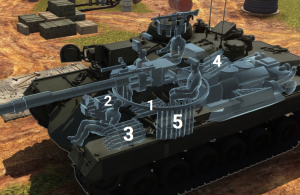
Ammo racks of the M48A2 G A2.
| Full ammo | 1st rack empty | 2nd rack empty | 3rd rack empty | 4th rack empty | 5th rack empty | Visual discrepancy |
|---|---|---|---|---|---|---|
| 46 | 42 (+4) | 34 (+12) | 20 (+26) | 15 (+31) | 1 (+45) | No |
Recommendation:
Less Ammo — Hull Empty: 20 (+26)
More Ammo — 1st Rack Empty: 42 (+4)
Machine guns
Main article: MG 3A1 (7.62 mm)
The M48A2 G A2 has two 7.62 mm MG3A1 machine guns with a total of 4,750 rounds of ammunition.
One gun is coaxial and one is located at the commander’s hatch with which you can defend yourself against enemy planes.
Орудие
Говоря про танки максимального в игре уровня, нужно сразу отметить, что после получения их развивать больше не нужно. Обычно они поставляются в максимальной комплектации, и особого выбора, что поставить, у вас не будет. То же самое касается и «М48 Паттон».
Единственным исключением является то, что в «стоковом варианте» на нем установлена пушка всего 8 уровня. Учитывая то, что данная машина приспособлена для боев против 9 и 10 уровней, это может стать проблемой. Поэтому после покупки постарайтесь набить опыта на премиумах или уповайте на то, что вас будет кидать в легкие бои.
- 90 mm Gun M41. Базовое орудие данного танка. Хорошим пробитием (263) обладают только премиум снаряды. Как и говорилось, «М48 Паттон» — это универсальная машина. Поэтому в базовом варианте он подходит разве что для сбития захвата да точечного засвета.
- 105 mm Gun T5E1M2 — орудие 9 уровня. Американские танки в целом являются неплохим выбором для тех, кому нравится играть на СТ. Пробивание на обычных снарядах — 218, на премиуме — 265.
- 105 mm Gun M68 — вершина оружейного дела для рассматриваемого нами танка. Пробивание — 268/330. Фугасные снаряды, конечно, слабы, но не в них суть. Машина с подобной пушкой способна вести не только разведку, но и длительную позиционную войну против тяжелых танков.
Имея скорострельность в 7 выстрелов в минуту и скорость сведения в 2 секунды, оружие позволяет вести динамичные бои в городских условиях и быстро менять дислокацию.
Навыки экипажа
Американские танки развиваются очень разносторонне, что позволяет играющим на них выбрать несколько моделей поведения. Учитывая то, что рассматриваемый танк имеет очень слабую броню для десятого уровня, мы рассмотрим всего один вариант распределения навыков — под снайпера.
В WoT ветки развития различных моделей танков могут быть одинаковыми по эффективности или очень разнообразными. Исходя из этого, и наборы навыков можно подобрать достаточно универсальные.
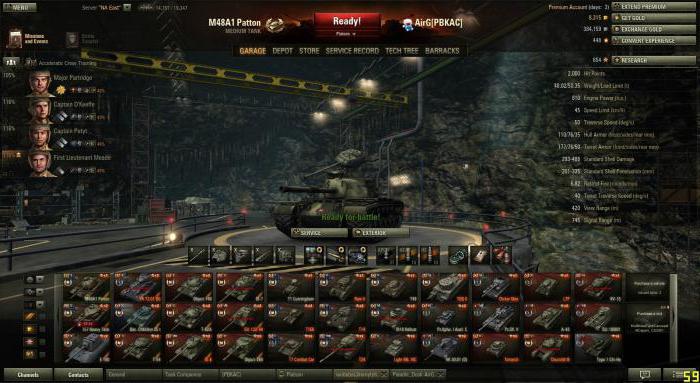
- Всем членам экипажа вашего танка «М48 Паттон» в обязательном порядке дайте навык «Боевое братство». Это универсальное умение, которое повысит эффективность всего экипажа.
- «Маскировка». Также нужна всем членам экипажа, поскольку мы собираемся играть в «Снайпера».
- Командир экипажа должен обладать способностью «Шестое чувство», чтобы вовремя поменять огневую позицию при обнаружении снайпера врагом. И естественно, «Орлиный глаз» для увеличения дальности обзора и стрельбы.
- Наводчик должен иметь возможность вывести из строя технику противника или членов экипажа. Для этого ему понадобится навык «Снайпер». Также будет полезен «Злопамятный». Позволит дольше держать противника под прицелом, что очень полезно на дальних дистанциях.
- Механик-водитель должен обладать всем, что облегчит судьбу машины в движении. Хорошо подойдут «Виртуоз» и «Плавный ход». Вы сможете более точно стрелять при движении и быстрее поворачиваться.
- С профессией заряжающего всё немного сложнее. С абсолютной уверенностью можно сказать, что ему необходим навык «Радиоперехват» для увеличения дальности обзора. В официальном гайде вторым дополнительным умением предлагается «Отчаянный» для ускорения перезарядки при падении прочности ниже 10%. Учитывая низкое бронирование танка, вас быстрее убьют, чем вы успеете с толком им воспользоваться. Поэтому мы предлагаем вам использовать «Интуицию». Может пригодиться, если придется быстро менять тип снарядов, пока враг не скрылся.
Trivia
•The M48 Patton was a Main Battle Tank designed by the U.S. and is the third tank to be given the name. The other two are the M46 and the M47.
•It saw extensive use in the Vietnam War, and was distributed to NATO allies all over the world during the Cold War, likely referred to by one of Angela’s voice lines.
•It was criticized for its tall stature, which made it an easy target.
•It was eventually replaced by the M60 Patton.
•Nonetheless, it served in the U.S. military up until the 1980s and is still in service of several countries up to this day.
•Angela’s personality seems to be mainly adventurous, though she can also be open to anyone.
Development history
M48A1 side view
On 27 February 1951, OTCM #33791 initiated the design of the new tank, designated the 90mm Gun Tank T-48 (the prefix letter «T» would be replaced by the prefix «X» beginning with the M60 series tank). A deeper modernization than the M46 and the M47, the M48 featured a new turret, new redesigned hull, and an improved suspension. The hull machine gunner position was removed, reducing the crew to 4. It was essentially a new tank. On 2 April 1953, the Ordnance Technical Committee Minutes (OTCM) order #34765 standardized the last of the Patton series tanks as the 90mm Gun Tank M48 Patton.
Nearly 12,000 M48s were built from 1952 to 1959. The early designs, up to the M48A2C’s, were powered by a gasoline 12-cylinder engine which was coupled with an auxiliary 8-cylinder engine (called the «Little Joe»). The gas engine gave the tank a short operating range and were prone to catching fire when hit. This version was considered unreliable but numerous examples saw combat use in various Arab-Israeli conflicts. They also were prone to fire when the turret was penetrated and the hydraulic lines ruptured spewing «cherry juice» (the nickname for the red colored hydraulic fluid) at high pressure into the crew compartment resulting in a fireball. The flashpoint was too low, less than 300 F, causing many burns and deaths to crew members.
Diesel power plant introduces
Beginning in 1959, most American M48s were upgraded to the M48A3 model which featured a diesel power plant. M48s with gas engines, however, were still in use in the US Army through 1968 and through 1975 by many West German Army units including the 124th Panzer Battalion.
In February 1963, the US Army accepted its first of 600 M48 Patton tanks that had been converted to M48A3’s, and by 1964, the US Marine Corps had received 419 Patton tanks. These Pattons were to be deployed to battle in Vietnam. Because all M48A3 tanks were conversions from earlier models, many characteristics varied among individual examples of this type. M48A3 tanks could have either 3 or 5 support rollers on each side and might have either the early or later type headlight assemblies.
New gun for the final version
In the mid-1970s, the M48A5 upgrade was developed to allow the vehicle to carry the heavier 105 mm gun. This was designed to bring the M48s up to speed with the M60 tanks then in regular use and to simplify ammunition logistics. Most of the M48s were placed into service with reserve units by this time.
By the mid-1990s, the M48s were phased out of U.S. service. Many foreign countries, however, continued to use the M48 models.
Description
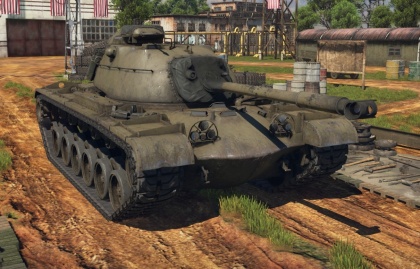
The 90 mm Gun Tank M48A1 Patton III is Rank V American medium tank
with a battle rating of 7.3 (AB/RB/SB). The tank was added in Update 1.59 «Flaming Arrows».
A first glance towards the M48A1 can give lots of similarities towards the M60. However, there are some aspects that can distinguish the M48 from the M60.
The M48A1 is probably most distinguished first by its rounded turret and gun, with the square-shaped gun mantlet covered by a cloth. The 90 mm gun has a cylinder muzzle brake going in a T-shape while a fume extractor sits only slightly behind the muzzle brake position.
The hull is distinguished compared to the successor M60 with its curved cast shape instead of straight welded plates.
M48 Patton gallery
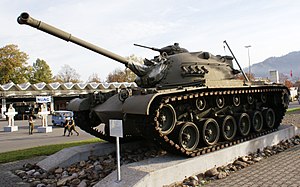
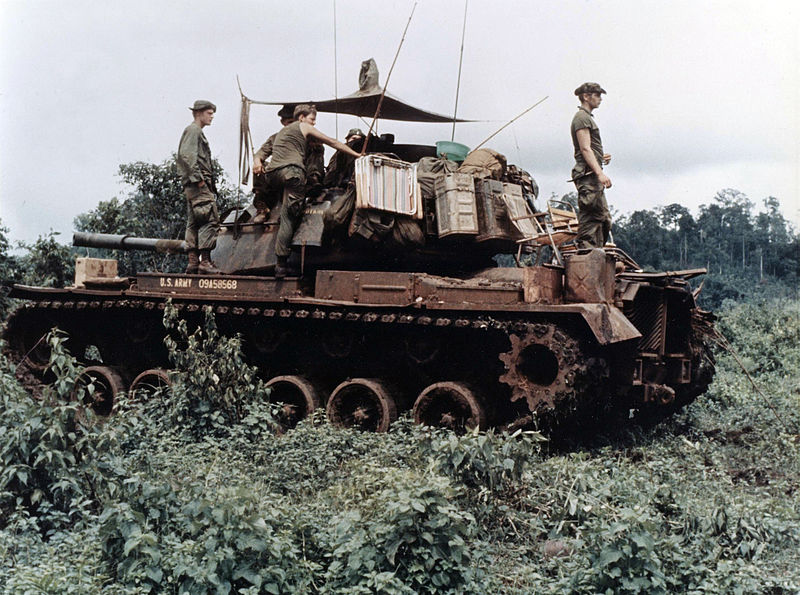
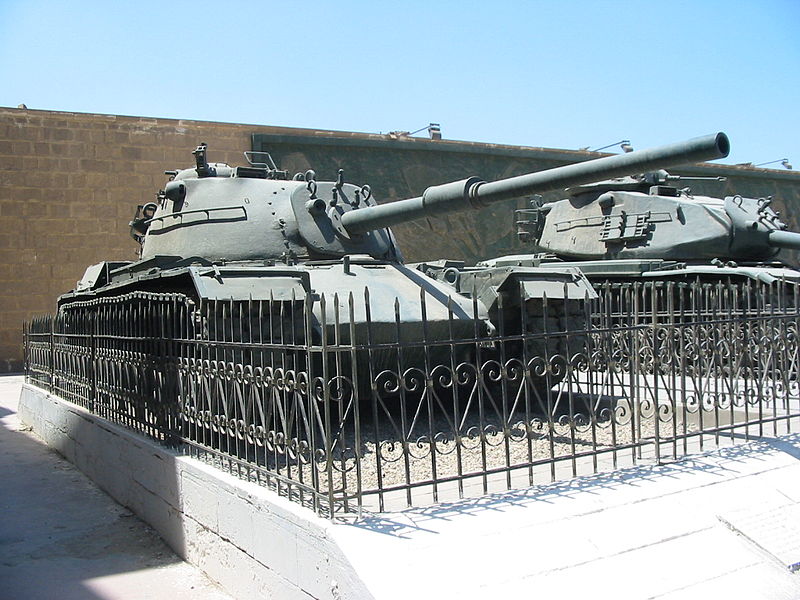
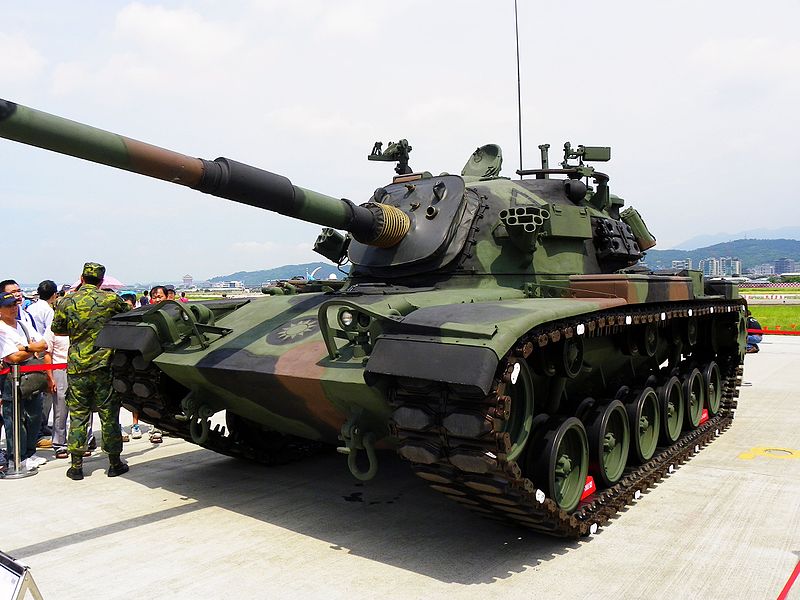
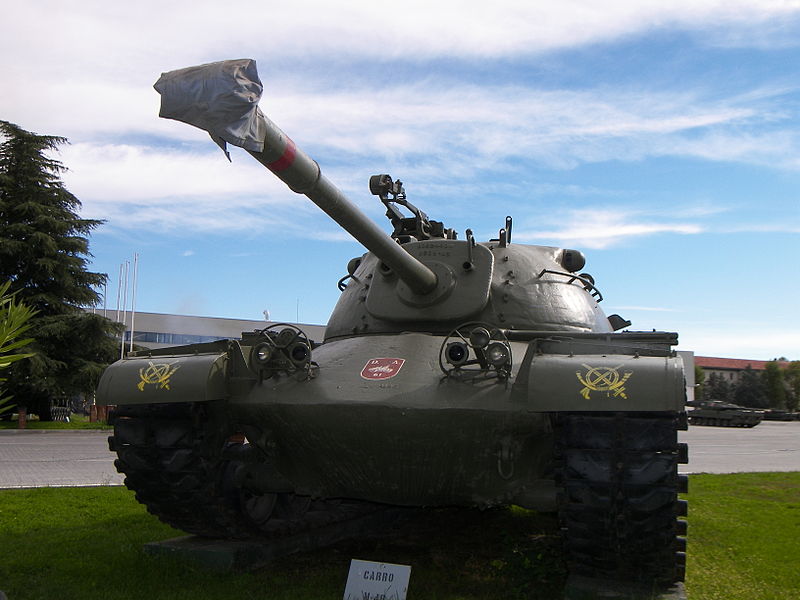
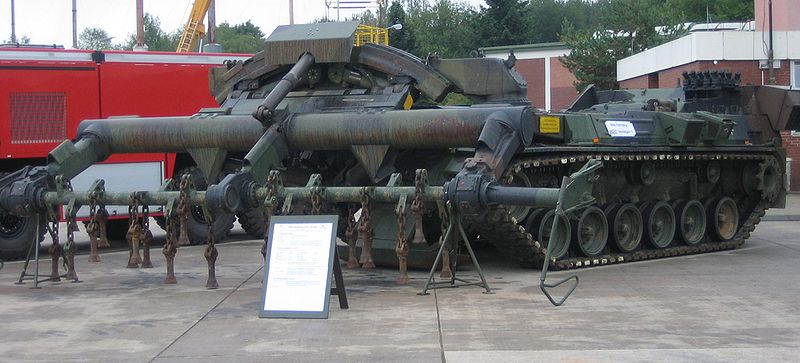
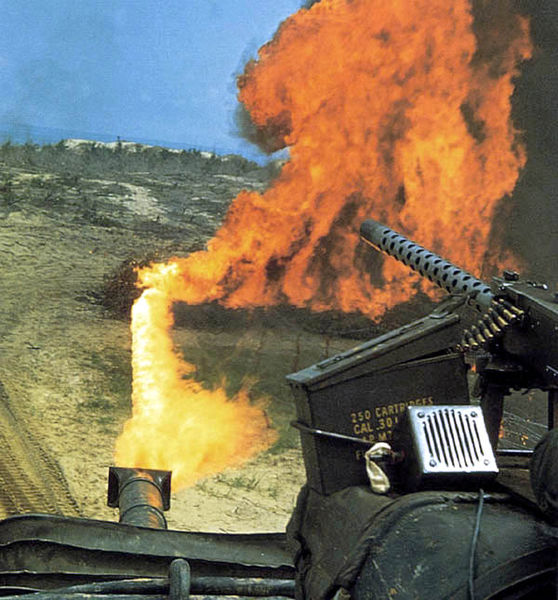
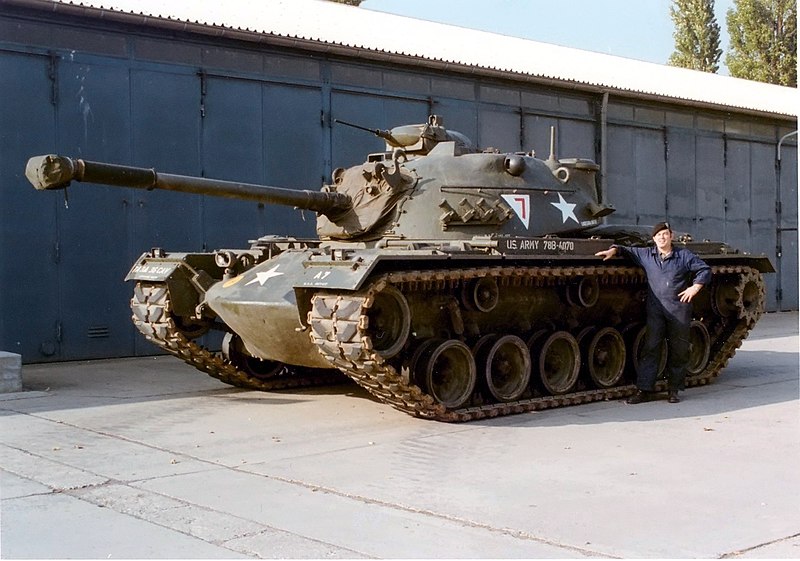
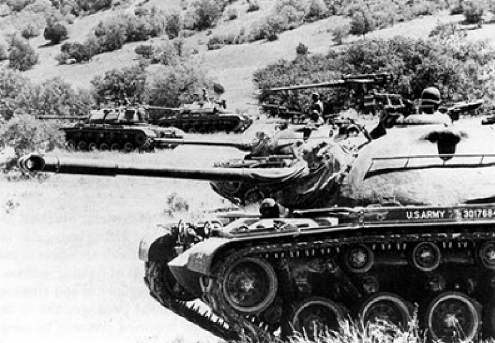
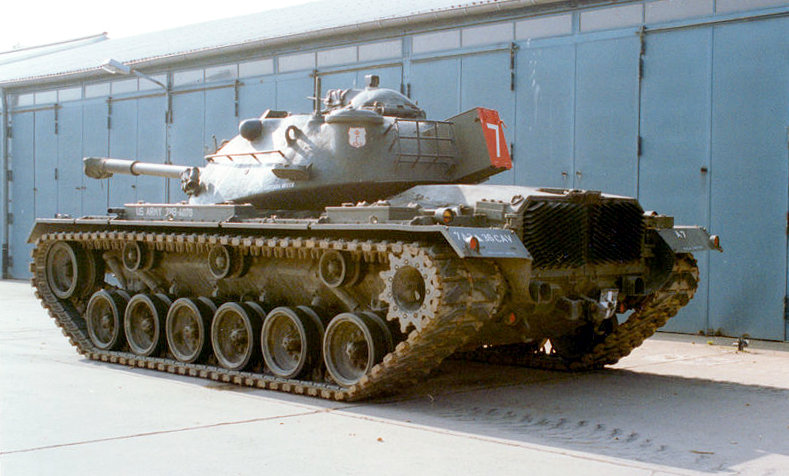
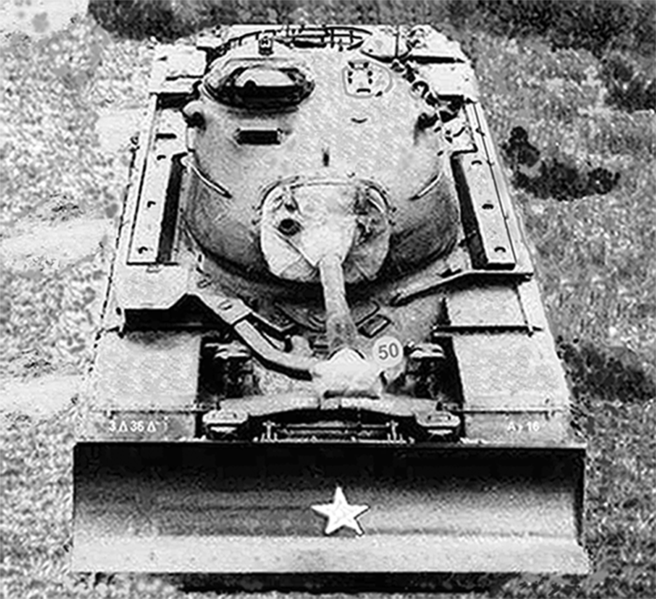
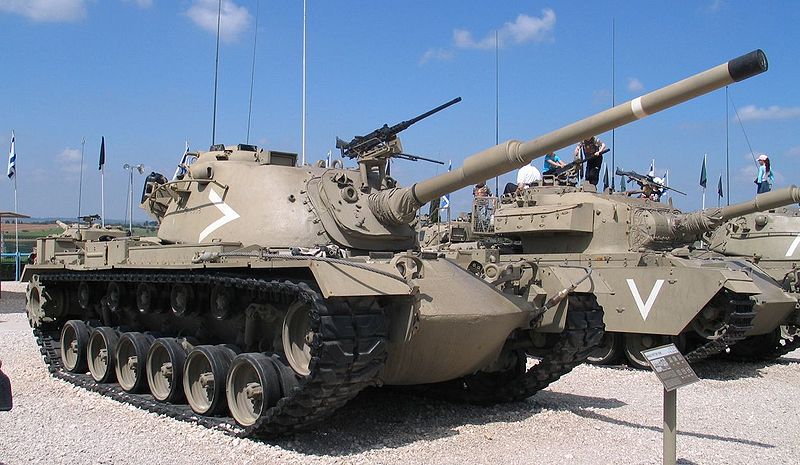
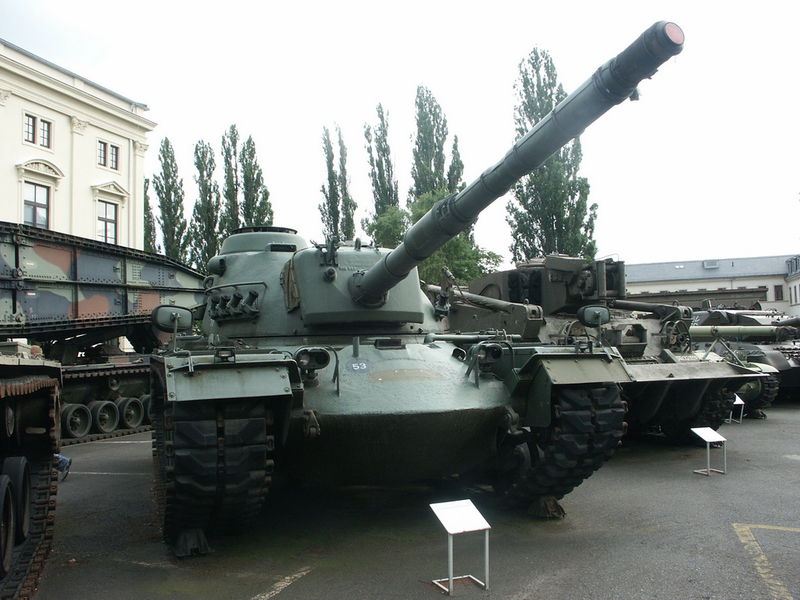
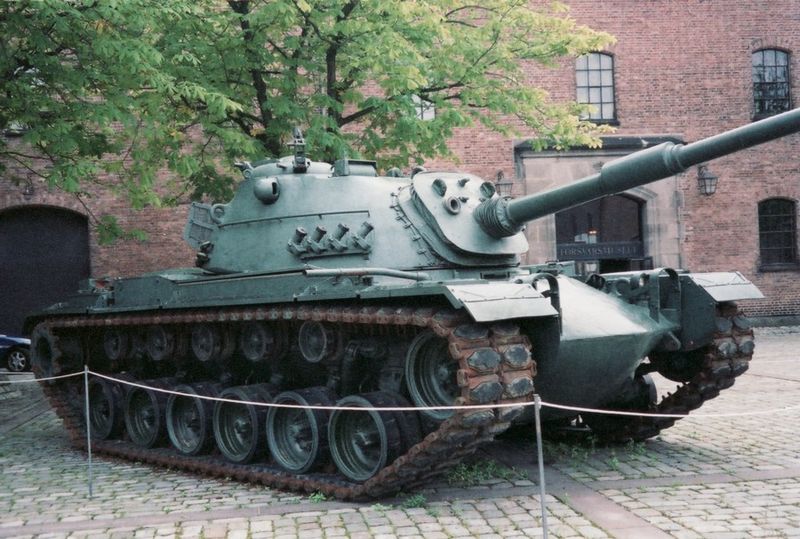
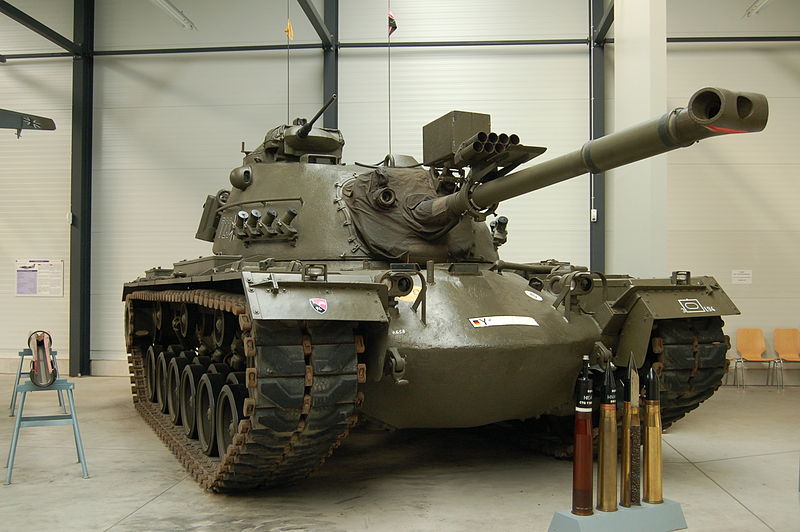

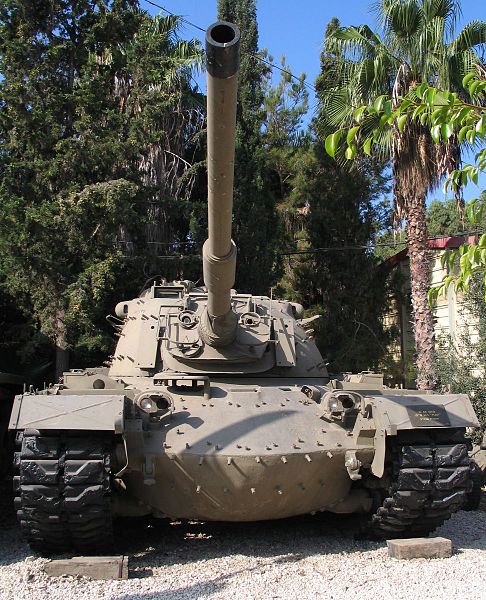
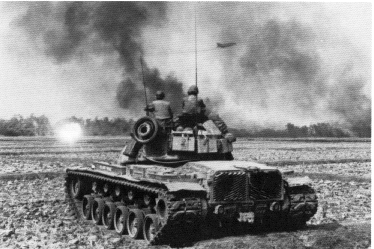

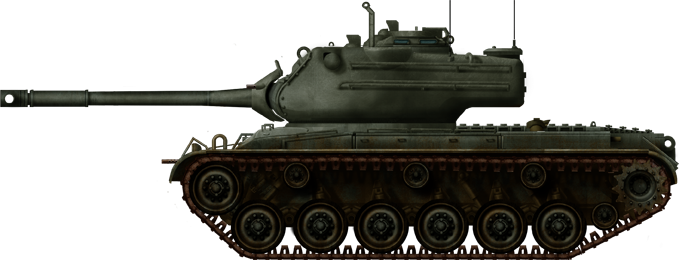
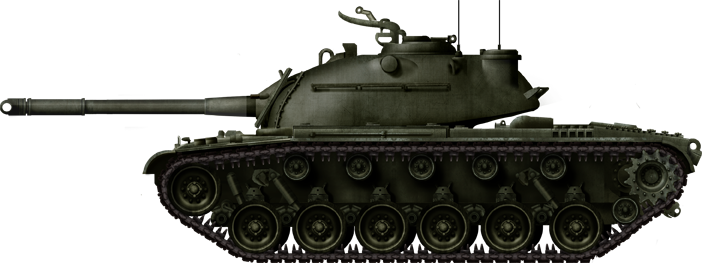
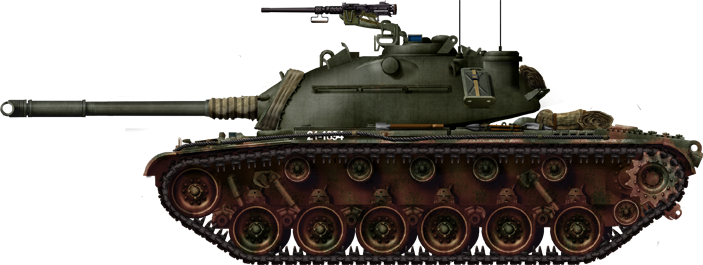


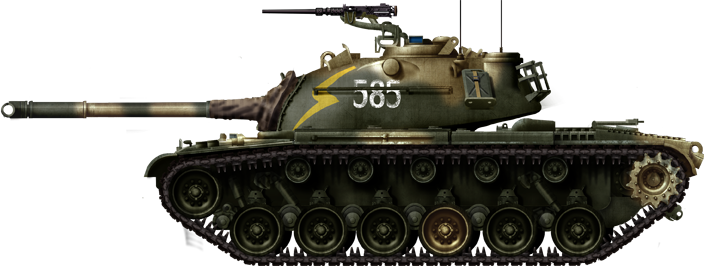

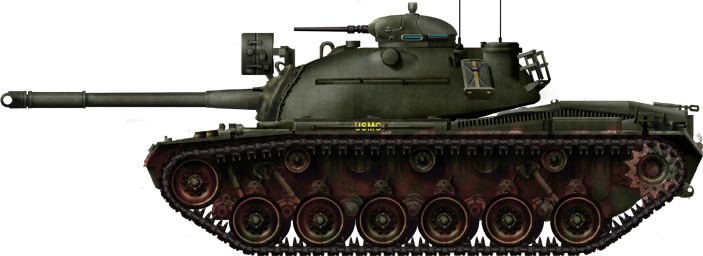
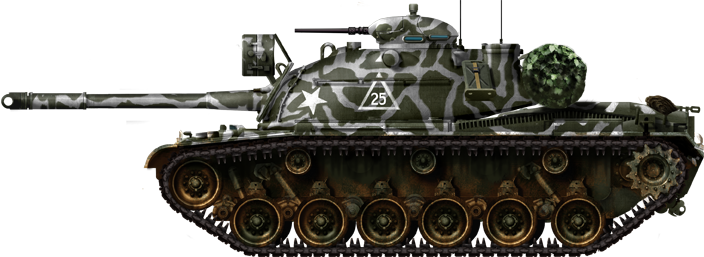
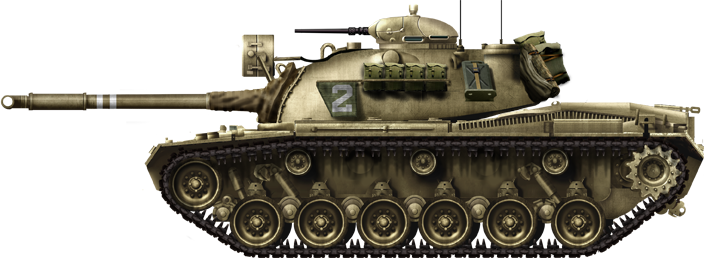
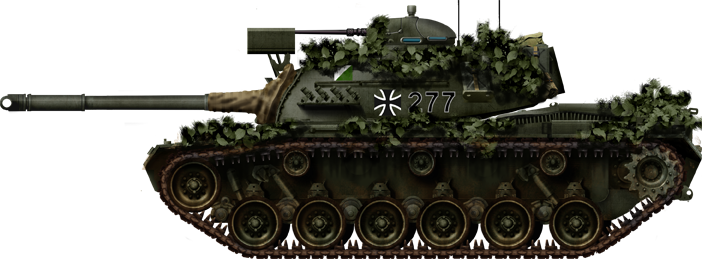
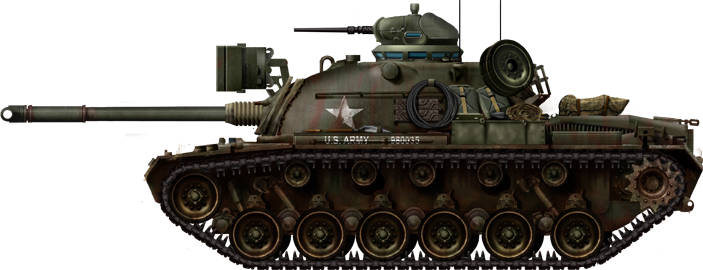 M48A3, possibly from the 1st tank batallion, Viet-Nam, 1966.
M48A3, possibly from the 1st tank batallion, Viet-Nam, 1966.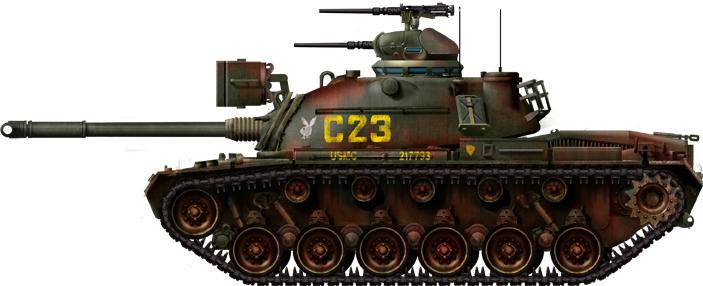
M48A3 “Playboy Bunny”, C Company, 2nd Platoon, 3rd Tank Battalion, 3rd Marine Division, South Vietnam, 1968.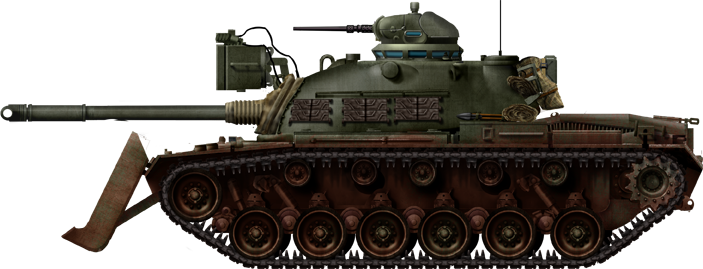
M48A3/E8 Tear Gaz launcher & Dozer, 1st Infantry, Phuoc Minh, Viet-Nam 1969.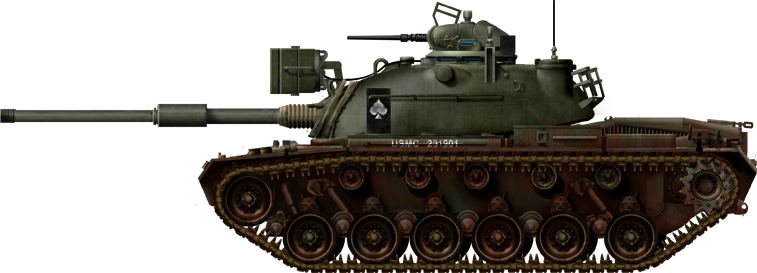
M48A3 from an unknown cavalry division, Viet-Nam 1971.
Israeli E8 M48A4, Yom Kippour 1973.
Late M48A5 Patton (with Urdan cupola) of the US 50th armoured division, 1982.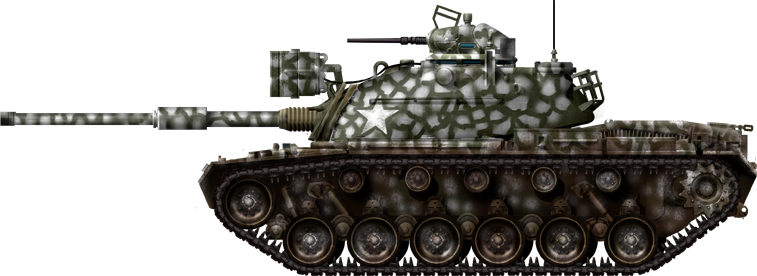
U.S. M48A5 stationed in West Germany in winter exercises, 1980s.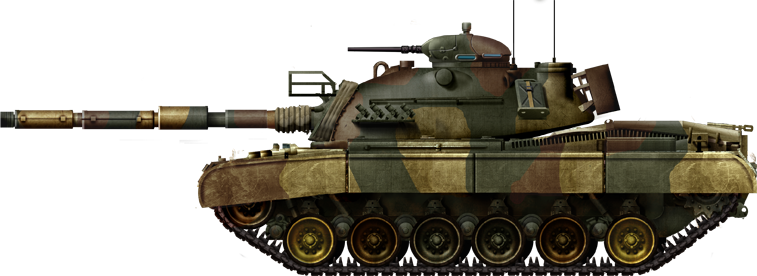
Turkish M48 T5, 1985.
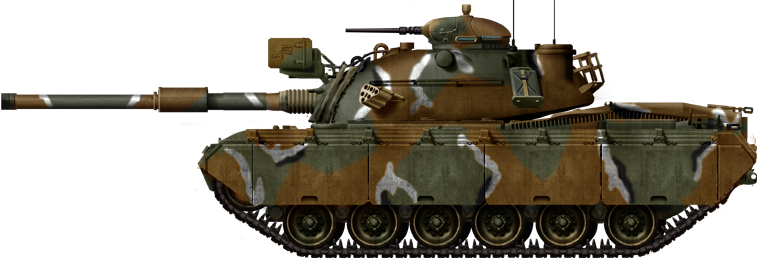
South Korean Army M48A5K, 1980s.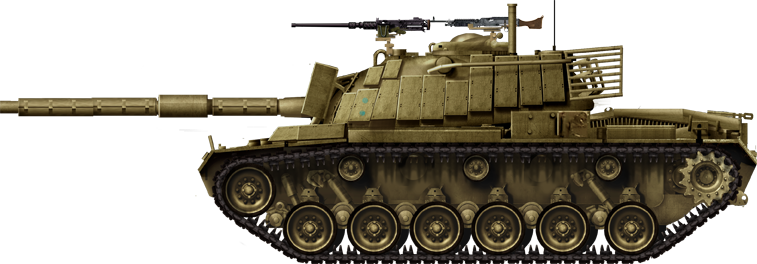
Israeli Magach 5 Golan. World first to be equipped with ERA blocks in operation, “Peace in Galilee”, Lebanon june 1982.
M48A5E1, US Army, Fort Benning, Columbus, Georgia, 1995.
By David Lister
A compilation of little known military history from the 20th century. Including tales of dashing heroes, astounding feats of valour, sheer outrageous luck and the experiences of the average soldier.
History
Development
In February 1951, Ordnance opted for a new tank design to modernize the M46 and M47 in the U.S. inventory. The tank was designated the 90 mm Gun Tank T-48 and featured a new hemispherical turret, new hull, and an improved suspension. The new design was also the first to remove the hull machine gunner position in American tanks, reducing the total crew from the usual 5 to 4. Further testing and trials with the T-48 design proved its worth and in April 1953, Ordnance standardized the design as the 90 mm Gun Tank M48 Patton, which would be the third in the Patton series, all named after General George S. Patton.
Production started in 1952 with the original M48 models. During the initial production run, several hundreds of the M48s were found to not be up to the standard protection ratings it should be, these were relegated to training tanks as the M48C. The model was developed into the M48A1 with a redesigned driver hatch and commander’s cupola that integrates a .50 cal machine gun for the commander to use. Next variant was the M48A2 with an improved power pack and transmission, along with a new rear plate and improved turret control. The M48A1 models improved with the M48A2 specifications in 1959, up to 1,019 were converted and are labelled the M48A3. The last major model was the M48A5, which is an upgrade of the M48 models in the 1970s with a 105 mm Gun M68, up to 2,069 converted. In total, about 12,000 M48 models were produced in all from the time period of 1952 to 1959.
Combat usage
The Americans mainly used the M48A3 Patton tanks in Vietnam, with 600 models deployed. Each battalion in the US Army and Marines armed with the M48 Patton had 57 tanks each. The Armored Cavalry Squadrons were initially armed with M48s before they were replaced by the lighter M551 Sheridan. A flamethrower variant was developed from the M48, which became known as the M67A1 «Zippo». The M48 also strengthened the Army of the Republic of Vietnam (ARVN) forces by supplementing their M41A1 Walker Bulldog light tanks. The main armour conflicts between the North and South Vietnamese forces usually involved an armour mix of T-54/PT-76B for the North and M48 Pattons/M41A1 Bulldogs for the South. In the conflicts, an incident on 23 April 1972 had an NVA anti-tank force with the new 9M14M Malyutka anti-tank guided missile destroy an M48 Patton, marking one of the early uses of the wide-spread infantry anti-tank missiles. Despite that, the M48s performed favourably in the Southern forces. Even after US forces withdrew from South Vietnam and North Vietnam started the Ho Chi Minh Offensive in 1975, the M48s left in the ARVN hands were able to hold back the assaulting T-34 and T-54/55 tanks, only falling when supplies ran out. After the war, the Americans mainly replaced their main tanks with the M60 Patton.
Like with most of the American equipment, the M48s were supplied to NATO allies across the world to assist in their conflicts. They became involved in the Indo-Pakistani War of 1965 and 1971 in the hands of Pakistan along with some M47s against India’s Centurions. Its overall performance in the conflicts was that they performed very well in the battlefield, only failing due to the poor tactics used by the armour forces. The M48s also saw service in the Middle Eastern conflicts. It was notably used in the conflicts against Israel in the Six-Day War of 1967 and the Yom Kippur War of 1973 in the hands of the Israelis and Jordanian Army. The Israels upgraded their M48s with the 105 mm guns, about 5 years earlier than the Americans, and fight against the Egyptian Soviet-supplied armour. They also saw use in the Lebanese Civil War in the hands of nearly all sides involved. They were also used in Turkey’s military in the Turkish invasion of Cyprus in 1974. The M48s were also used in Iranian hands in the Iran-Iraq war against Soviet-supplied weaponry in Iraq’s hands. Morocco also received a hundred M48A5 Pattons from America in 1987. One of the most recent conflicts the M48s were used was in the Battle of Mogadishu in 1993 when assisting the stranded US Rangers and Delta Force in the city.
The M48s were used by 19 different countries in the world during its service life, of which 9 countries still use in varying quantities. Despite being rather outdated in the later part of the Cold War, which warranted its replacement by the M60, the M48 help supplemented the forces around the world in their conflicts. With many models remain in inventory across the world, it still proves a valuable weapon against countries without advanced anti-tank weaponry.
Development history
M48A1 side view
On 27 February 1951, OTCM #33791 initiated the design of the new tank, designated the 90mm Gun Tank T-48 (the prefix letter «T» would be replaced by the prefix «X» beginning with the M60 series tank). A deeper modernization than the M46 and the M47, the M48 featured a new turret, new redesigned hull, and an improved suspension. The hull machine gunner position was removed, reducing the crew to 4. It was essentially a new tank. On 2 April 1953, the Ordnance Technical Committee Minutes (OTCM) order #34765 standardized the last of the Patton series tanks as the 90mm Gun Tank M48 Patton.
Nearly 12,000 M48s were built from 1952 to 1959. The early designs, up to the M48A2C’s, were powered by a gasoline 12-cylinder engine which was coupled with an auxiliary 8-cylinder engine (called the «Little Joe»). The gas engine gave the tank a short operating range and were prone to catching fire when hit. This version was considered unreliable but numerous examples saw combat use in various Arab-Israeli conflicts. They also were prone to fire when the turret was penetrated and the hydraulic lines ruptured spewing «cherry juice» (the nickname for the red colored hydraulic fluid) at high pressure into the crew compartment resulting in a fireball. The flashpoint was too low, less than 300 F, causing many burns and deaths to crew members.
Diesel power plant introduces
Beginning in 1959, most American M48s were upgraded to the M48A3 model which featured a diesel power plant. M48s with gas engines, however, were still in use in the US Army through 1968 and through 1975 by many West German Army units including the 124th Panzer Battalion.
In February 1963, the US Army accepted its first of 600 M48 Patton tanks that had been converted to M48A3’s, and by 1964, the US Marine Corps had received 419 Patton tanks. These Pattons were to be deployed to battle in Vietnam. Because all M48A3 tanks were conversions from earlier models, many characteristics varied among individual examples of this type. M48A3 tanks could have either 3 or 5 support rollers on each side and might have either the early or later type headlight assemblies.
New gun for the final version
In the mid-1970s, the M48A5 upgrade was developed to allow the vehicle to carry the heavier 105 mm gun. This was designed to bring the M48s up to speed with the M60 tanks then in regular use and to simplify ammunition logistics. Most of the M48s were placed into service with reserve units by this time.
By the mid-1990s, the M48s were phased out of U.S. service. Many foreign countries, however, continued to use the M48 models.
В бой
Итак, как играть на «М48 Паттон»? Из-за невысокой скорости и слабой брони вам никогда не быть на острие атаки или во главе колонны. Да и не нужно. Ваше главное преимущество — урон и обзор. Благодаря неплохой проходимости, вы всегда можете обойти противника по бездорожью и нападать с самых непредсказуемых направлений.
Запомните — танк «Паттон М48» не воюет один. Ваша задача — поддержать группу огнем с дальней дистанции или с непредсказуемых направлений, но при этом не дать себя обнаружить. В таком случае спастись будет сложновато.
«М48 Паттон», гайд по которому вы читаете, идеально подходит для опытных игроков. Он не сможет в одиночку «вытащить» весь бой, но при грамотном использовании способен переломить ход каждой схватки на карте.
